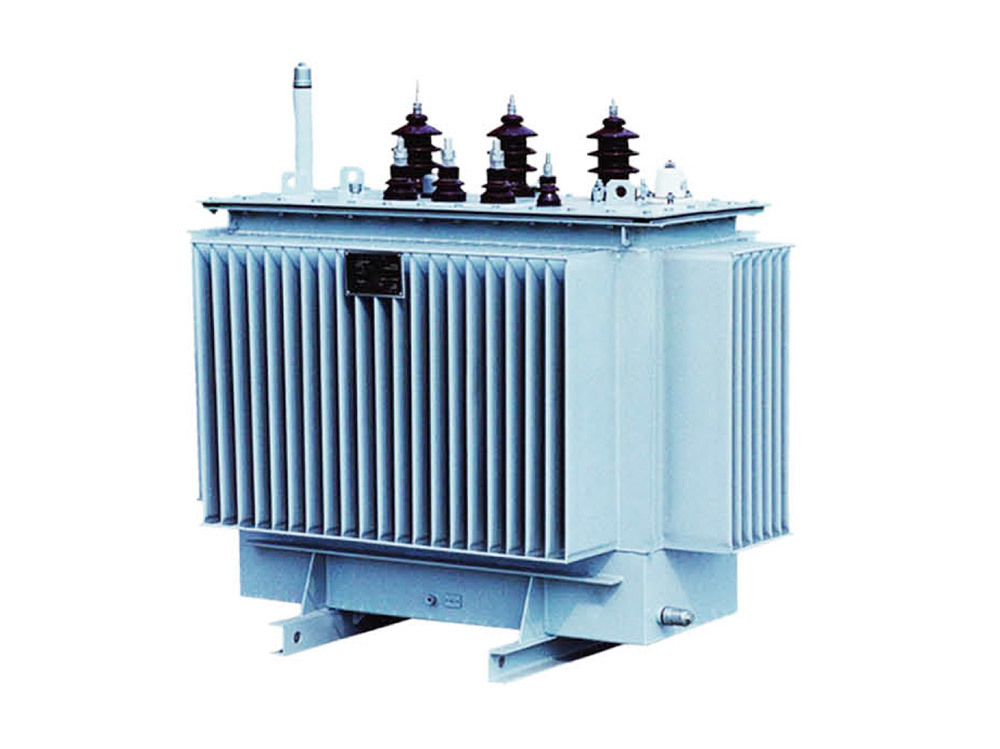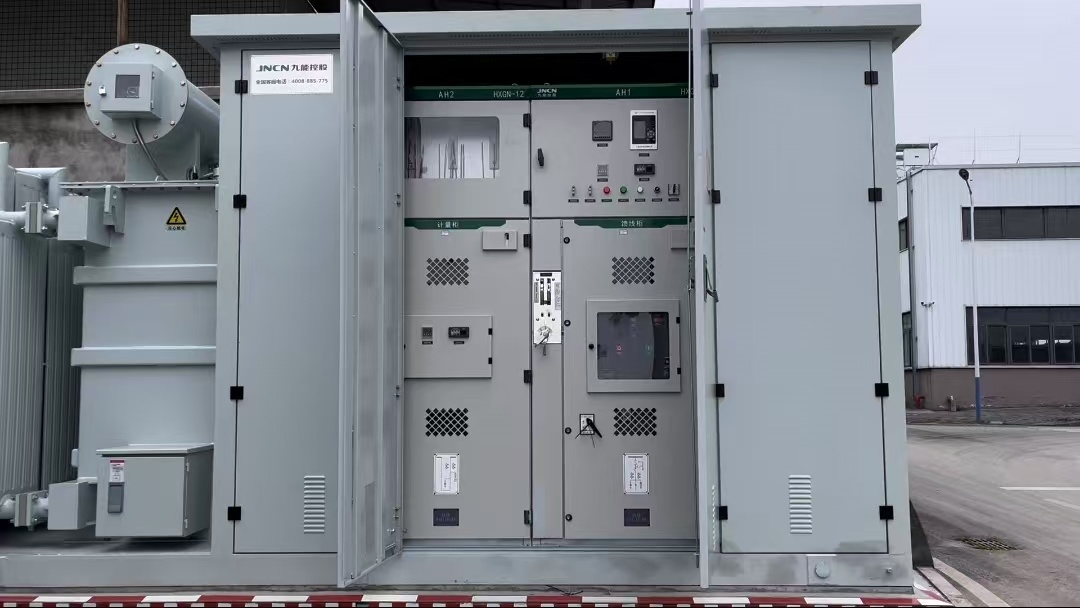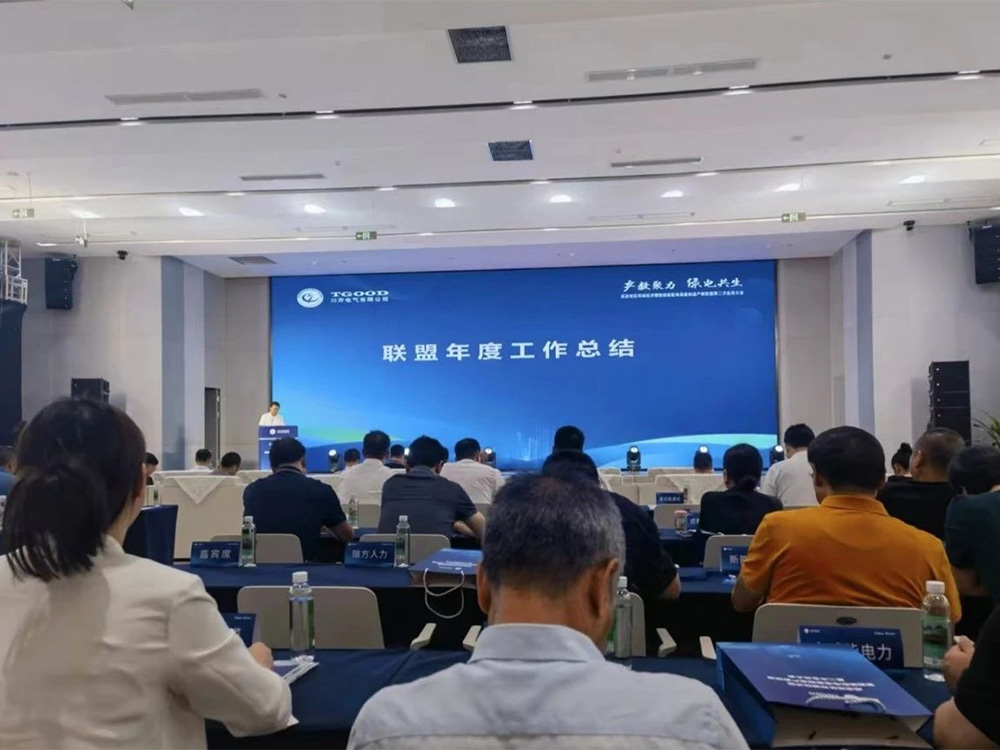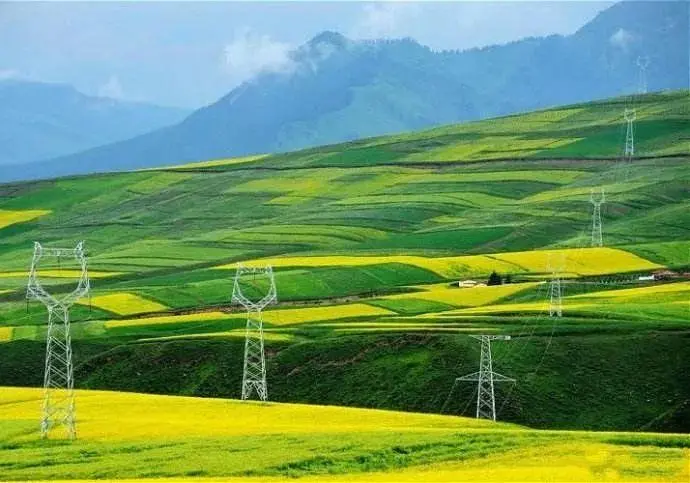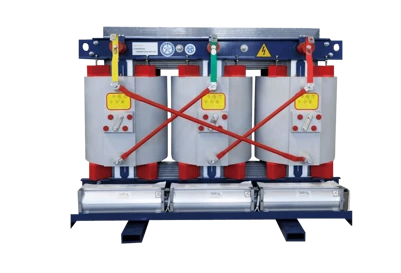23
2021
-
10
Details of the structure, cooling mode, installation and commissioning of dry-type transformers
Author:
Dry-type transformer refers to the core and winding is not immersed dry-type transformer refers to the core and winding is not immersed in the coil and core cast together, and the use of natural cooling or air cooling of a power transformer. As a post-rise power transformation and distribution equipment, it has been widely used in power transmission and transformation systems in factory workshops, high-rise buildings, commercial centers, airports, docks, subways, oil platforms and other places, and can form a complete set of substations with compact structures together with switchgear. At present, China's dry-type power transformers are mostly three-phase solid forming SC series, such as: SCB9 series three-phase winding transformer, SCB10 series three-phase foil transformer SCB9 series three-phase foil transformer. Its voltage level is generally in the range of 6-35KV, and the maximum capacity can reach 25MVA. For dry-type transformers, do you want to know more? The following is a detailed introduction to the structure of dry-type transformers, cooling methods, types, and oil-immersed transformers have what advantages? Installation and commissioning, how to judge the fault from the sound, the noise caused by the external structure and the solution, the selection points. take a look at it!
Reading Guidance
Dry-type transformer refers to the core and winding is not immersed dry-type transformer refers to the core and winding is not immersed in the coil and core cast together, and the use of natural cooling or air cooling of a power transformer. As a post-rise power transformation and distribution equipment, it has been widely used in power transmission and transformation systems in factory workshops, high-rise buildings, commercial centers, airports, docks, subways, oil platforms and other places, and can form a complete set of substations with compact structures together with switchgear.
(Source: Xian Ji Network, copyright owned by the author. Original link: https://www.xianjichina.com/news/details_95719.html)
At present, China's dry-type power transformers are mostly three-phase solid forming SC series, such as: SCB9 series three-phase winding transformer, SCB10 series three-phase foil transformer SCB9 series three-phase foil transformer. Its voltage level is generally in the range of 6-35KV, and the maximum capacity can reach 25MVA. For dry-type transformers, do you want to know more?Here to introduce in detail the structure of dry-type transformer, cooling mode, type, and oil-immersed transformer has what advantages? Installation and commissioning, how to judge the fault from the sound, the noise caused by the external structure and the solution, the selection points.take a look at it!
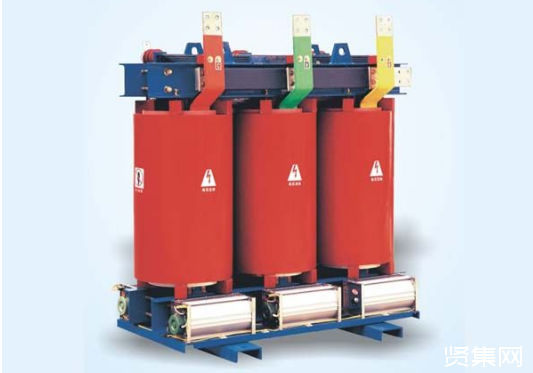
The structure of dry-type transformer
1. Opening type:It is a commonly used form. Its body is in direct contact with the atmosphere and is suitable for relatively dry and clean rooms (when the ambient temperature is 20 degrees, the relative humidity should not exceed 85%). Generally, there are two cooling methods: air self-cooling and air cooling.
2. Closed type:The device is housed in a closed enclosure and is not in direct contact with the atmosphere (due to poor sealing and heat dissipation conditions, it is mainly used for mining and belongs to explosion-proof type).
3. Pouring type:With epoxy resin or other resin casting as the main insulation, its structure is simple, small size, suitable for small capacity transformer.
Cooling method of dry-type transformer
Dry-type transformer cooling methods are divided into natural air cooling (AN) and forced air cooling (AF). Natural air cooling, the transformer can be rated capacity under long-term continuous operation. When forced air cooling, the output capacity of the transformer can be increased by 50%. It is suitable for intermittent overload operation or emergency accident overload operation. Due to the large increase in load loss and impedance voltage during overload, it is in a non-economic operation state, so it should not be in continuous overload operation for a long time.
Types of dry-type transformers
1. Impregnated air-insulated dry-type transformers:It is currently used very little. Winding wire insulation, insulation structure materials according to the need to choose different heat-resistant insulation materials, made of B, F and H class insulation dry-type transformer.
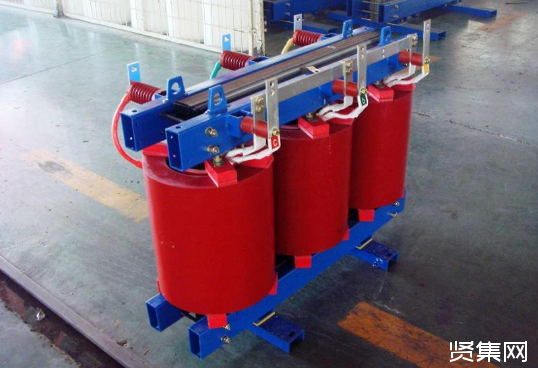
2. Epoxy resin cast dry-type transformer:The insulating materials used are polyester resin and epoxy resin. At present, epoxy resin is mostly used in cast insulation dry-type power transformers.
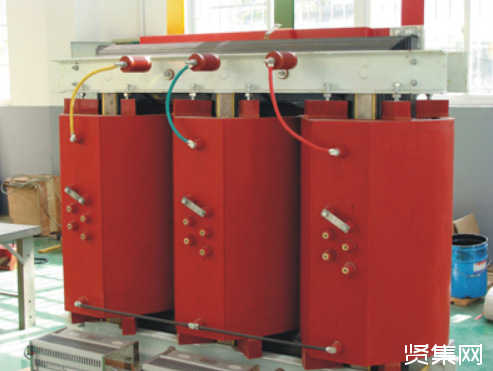
3. Wrapped insulation dry-type transformer:Wrap insulation dry-type transformer is also a kind of resin insulation, the current manufacturers less.
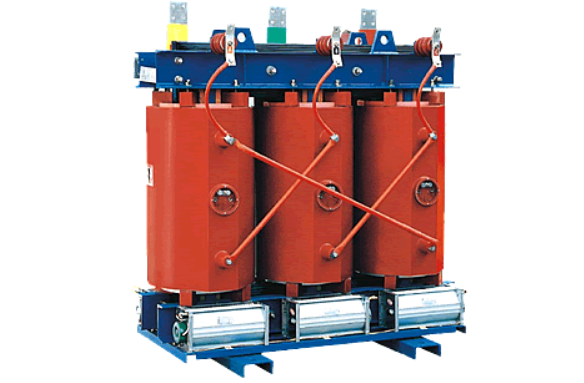
4. Composite insulation dry-type transformer:
(1) The high-voltage winding is cast, and the low-voltage winding is impregnated with insulation;
(2) The high voltage adopts pouring type, and the low voltage adopts foil winding made of copper foil and aluminum foil.
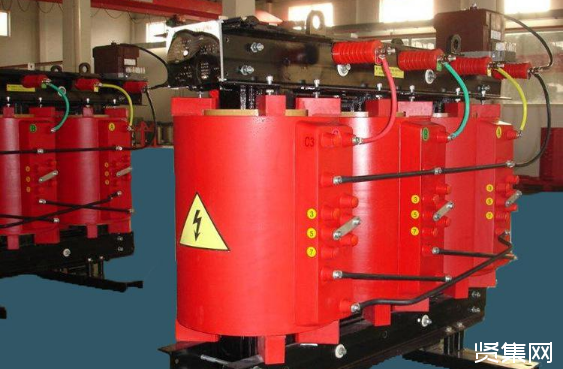
What are the advantages of dry-type transformers and oil-immersed transformers
1. Dry-type power transformers can avoid the risk of fire and explosion of transformer oil due to faults in operation. Since the dry-type transformer insulation materials are flame retardant materials, even if the transformer fails in operation and causes a fire or an external fire source, it will not expand the fire disaster.
2. Dry-type power transformers will not have oil leakage problems like oil-immersed transformers, and there will be no problems such as transformer oil aging. Usually, the operation and maintenance of dry-type power transformers are greatly reduced, and even maintenance-free.
3. Dry-type power transformers are generally indoor devices, and can also be made into outdoor types for special requirements. It can be installed in the same room as the switch cabinet to reduce the installation area.
4. Dry-type power transformers have few accessories due to no oil, no oil conservator, safety airway, a large number of valves and other components, no sealing and other problems.
Installation and Commissioning of Dry-Type Transformer
1. Unpacking inspection before installation
Check whether the package is in good condition. After unpacking the transformer, check whether the nameplate data of the transformer meets the design requirements, whether the factory documents are complete, whether the transformer is in good condition, whether there are signs of external damage, whether the parts are displaced and damaged, whether the electrical support or connecting line is damaged, and finally check whether the spare parts are damaged and short.
2. Transformer installation
First check the foundation of the transformer to check whether the embedded steel plate is horizontal, and there should be no holes under the steel plate to ensure that the foundation of the transformer has good seismic and sound absorption performance, otherwise it will increase the noise of the transformer after installation. Then, use the rolling bar to move the transformer to the installation position, draw off the rolling bar, accurately adjust the transformer to the design position, and the installation level error meets the design requirements. Finally, four short channel steel is welded on the four corners close to the transformer base, that is, the embedded steel plate, so that the transformer does not move in position during use.
3. Wiring of transformer
The minimum distance between electrified bodies and the electrified body to the ground shall be ensured during wiring, especially the distance from the cable to the high-voltage coil. The high-current low-voltage bus shall be separately supported and cannot be directly pressed on the transformer terminal to generate excessive mechanical tension and torque. When the current is greater than 1000A (for example, 2000A low-voltage bus is used in this project), there must be a soft connection between the bus and the transformer terminal to compensate for the thermal expansion and cold contraction of the conductor and isolate the vibration of the bus and the transformer. The necessary contact pressure must be maintained at the electrical connection of each wiring. Elastic elements (such as disc-shaped plastic rings or spring washers) should be used. When tightening the connecting bolts, torque wrenches should be used. The torque reference values provided by the manufacturer are shown in Table 1.

4. Grounding of transformer
The grounding point of the transformer is on the base on the low-voltage side, and a special grounding bolt is led out, which is marked with a grounding mark. The grounding of the transformer must be reliably connected to the protective grounding system through this point. When the transformer has a shell, the shell should be reliably connected to the grounding system. When the low-voltage side adopts a three-phase four-wire system, the neutral line should be reliably connected to the grounding system.
5. Inspection before operation of transformer
Check whether all fasteners are loose, whether the electrical connection is correct and reliable, whether the insulation distance between the electrified bodies and the electrified body to the ground is in accordance with the regulations, there should be no foreign matter near the transformer, and the coil surface should be cleaned.
6. Commissioning before operation of transformer
(1) Check the transformer ratio and connection group, measure the DC resistance of high and low voltage windings, and compare the results with the factory test data provided by the manufacturer.
(2) Check the insulation resistance between coils and coil to ground. If the insulation resistance is significantly lower than the factory measurement data of the equipment, it indicates that the transformer is damp. When the insulation resistance is lower than 1000 Ω/V (operating voltage), the transformer must be dried.
(3) The test voltage of the withstand voltage test shall meet the requirements. During the low-voltage withstand voltage test, the temperature sensor TP100 shall be taken out. After the test, the sensor shall be returned in time.
(4) When the transformer is equipped with a fan, the fan should be energized to run and ensure its normal operation.
7. Commissioning
After careful inspection before putting into operation, the transformer can be energized for trial operation. During commissioning, the following points must be checked with particular attention. Abnormal sound, noise and vibration. Whether there is any abnormal smell such as burnt odor. Whether there is discoloration due to local overheating. Whether ventilation is good. In addition, the following points should also be noted.
First, although the dry-type transformer has strong moisture resistance, it is still susceptible to moisture because it is generally an open structure, especially the dry-type transformer produced in China has a low insulation level (lower insulation level). Therefore, the dry-type transformer in the relative humidity below 70% operation to obtain high reliability. Dry-type transformers should also avoid long-term outages to avoid serious moisture. When the insulation resistance value is lower than 1000/V (operating voltage), it indicates that the transformer is seriously affected with moisture, and the trial operation should be stopped.
Second, the dry-type transformer used in the power station is different from the oil-immersed transformer. It is forbidden to open the low-voltage side to avoid the insulation breakdown of the dry-type transformer due to the overvoltage on the power grid side or the lightning strike on the line. In order to prevent the transmission of over-voltage hazards, a set of over-voltage protection arresters (such as Y5CS zinc oxide arresters) should be installed on the voltage bus side of the dry-type transformer.
How to judge the fault from the sound of dry-type transformer
1. Sound when phase is missing
When the transformer is short of phase, if the second phase is blocked, the second phase is still silent, and the third phase is still silent. If the third phase is blocked, the sound will not change, just like the second phase. There are three reasons for the lack of phase:
① Lack of one phase of power supply;
② One phase of high voltage fuse of transformer is blown;
③ transformer due to transport careless, coupled with the high voltage lead thin, resulting in vibration disconnection (but not grounded).
2. The voltage regulating tap-changer is not in place or has poor contact
When the transformer is put into operation, if the tap changer is not in place, it will make a loud "chirp" sound, which will cause the high-voltage fuse to blow; if the tap changer is not in good contact, it will produce a slight "squeak" spark discharge Sound, once the load increases, it may burn the contact of the tap changer. Encountered this kind of situation, to timely power repair.
3, falling into the foreign body and piercing screw loose
When the core screw of the clamping core of the transformer is loose, there are nut parts left on the core or small metal objects fall into the transformer, the transformer will emit a "ding-dang" knocking sound or "whooping... whooping..." The sound of blowing and the sound of "squeaking" like a magnet attracting a small gasket, while the voltage, current and temperature of the transformer are normal. This kind of situation generally does not affect the normal operation of the transformer, can wait until the power failure to deal.
4. Dirty and cracking of high voltage bushing of transformer
When the high-voltage bushing of the transformer is dirty and the surface enamel falls off or cracks, the surface flashover will occur, and the sound of "hissing" or "puffing" will be heard, and sparks can be seen at night. Kan
5. Grounding disconnection of transformer core
When the core grounding of the transformer is broken, the transformer will produce a slight discharge sound of "beep peel beep peel.
6. Internal discharge
When power is sent, the crisp sound of "crackling" is heard, which is the discharge sound of the conductive lead through the air to the transformer shell. If you hear the dull "crackling" sound through the liquid, it is the discharge sound of the conductor facing the shell through the transformer oil. If the insulation distance is not enough, the power shall be cut off to check the hanging core, and the insulation shall be strengthened or the insulation partition shall be added.
7. External line disconnection or short circuit
When the line is broken at the connection of the wire or the T-connection, when it is windy, it is broken when it is connected, and arc or spark occurs when it is in contact, then the transformer will make a frog-like cry. When the low-voltage line is grounded or a short-circuit accident occurs, the transformer will make a "boom" sound. If the short circuit point is close, the transformer will roar like a tiger. Kan
8. Transformer overload
When the transformer is overloaded seriously, it emits a low "buzzing" sound like a heavy-duty aircraft.
9. The voltage is too high
When the power supply voltage is too high, the transformer will be over-excited, and the sound will increase and be sharp.
10. Winding short circuit
When the transformer winding layer or inter-turn short circuit and burn out, the transformer will issue a "glug" boiling sound.
Noise Caused by External Structure of Dry-Type Transformer and Its Solution
(1) Dry-type transformers generally have a fan cooling system, and the abnormal noise of dry-type transformers is often caused by the failure of the fan system. Fan mainly has the following three types of failure phenomenon:
① When the fan is put into use, it makes a "crackling" metal impact sound. This is the fan inside the foreign body, then the need to clean up the foreign body.
The fan just started when the sound of friction and continuous, this is the quality of the fan itself, the fan must be replaced to ensure the normal operation of the fan system.
(2) The transformer with protection grade IP20 or IP40 has a shell device, which will also be the source of transformer noise. The transformer will vibrate during operation. If the shell is not fixed properly, it will cause the shell to vibrate, thus generating noise. Therefore, when installing the shell, it is better to add rubber pads between the shell and the ground and the shell and the transformer base to weaken the transmission of vibration sound.
(3) After entering the electric room, the "buzzing" sound from time to time can be heard in a certain direction of the transformer. This is the result of the superposition of the sound waves generated by the vibration of the transformer through the reflection of the wall. This situation is special and is related to the space of the electric room and the placement position of the transformer. At this time, the position of the transformer can be adjusted to reduce the sound, or some sound-absorbing materials can be appropriately installed on the wall in the electric room.
(4) The installation position of the transformer floor or bracket is not good, which will aggravate the vibration of the transformer and increase the noise of the transformer. Some transformers are placed on the ground is not strong, then you will find that the ground will shake, standing next to you will feel the vibration, serious will see the ground cracks, if so, it is necessary to place the transformer reinforcement, so as to reduce noise.
Key Points for Selection of Dry-type Transformer
1. choose transformer according to the load condition:
1. When there are a large number of primary or secondary loads, two or more transformers should be installed. When any one of the transformers is disconnected, the capacity of the remaining transformers can meet the power consumption of primary and secondary loads. 1. secondary load as concentrated as possible, should not be too scattered.
2. When the seasonal load capacity is large, special transformers should be installed. Such as large civil S4270D27-29 27 2005.7.29,3:24AM building air conditioning freezer load, heating electric heat load, etc.
3. When the concentrated load is large, special transformer should be installed. Such as large heating equipment, large X-ray machine, arc furnace, etc.
4. When the lighting load is large or the power and lighting use a common transformer that seriously affects the lighting quality and bulb life, a special lighting transformer can be set.
2. choose transformer according to the use environment:
1. Under normal medium conditions, oil-immersed transformers or dry-type transformers can be selected according to the situation, such as industrial and mining enterprises, agricultural independent or attached substation, residential independent substation, etc. Alternative transformers are S8, S9, S10, SC(B)9, SC(B)10, etc.
In multi-storey or high-rise main buildings, non-combustible or flame-retardant transformers should be selected, such as SC(B)9, SC(B)10, SCZ(B)9, SCZ(B)10, etc.
3. In places where dusty or corrosive gases seriously affect the safe operation of transformers, closed or sealed transformers should be selected, such as BS 9, S9-, S10-, SH12-M, etc.
4. High and low power distribution devices without combustible oil and non-oil-immersed distribution transformers can be installed in the same room. At this time, the transformer should be equipped with IP2X protective shell to ensure safety.
Conclusion
The above is to explain the dry-type transformer structure, cooling mode, type, and oil-immersed transformer has what advantages? Installation and commissioning, how to judge the fault from the sound, the noise caused by the external structure and the solution, the selection points. I hope this knowledge can help everyone! As one of the important power equipment in transmission and distribution lines, dry-type transformers are more and more popular with users because of their high insulation strength, strong short-circuit resistance, environmental protection, fire prevention, explosion-proof and maintenance-free advantages. Therefore, for installation technicians, we must use professional scientific technology to make every preparation, and solve the problems in the installation process in time to ensure the safe operation of the equipment. Of course, the dry-type transformer market is uneven, and the price is even more outrageous. The same transformer can be very different from different manufacturers. Many manufacturers are fighting a price war, forcing excellent products to have no market and have to cut corners. Of course, many brand transformer quality is guaranteed. In this case, as far as procurement is concerned, we should consider all factors and choose products that meet our own needs.
recommend News






